Lean management's five principles guide us to identify value, streamline workflow, and eliminate waste, creating a process that efficiently detects and addresses problems. However, merely resolving a problem isn't enough; it's crucial to identify and address its root cause to prevent recurrence.
Blockers, or obstacles preventing a team from completing tasks, are a common cause of recurring issues. Once a blocker is resolved, its cause is often forgotten until it reappears, negatively impacting cycle times. Collecting detailed information on blockers and analyzing them is essential. A blocker clustering technique developed by Dr. Klaus Leopold addresses this issue. Let's explore it.
Understanding the Blocker Clustering Technique
Blocker clustering is a technique to systematically identify, analyze, and address blockers (special obstacles that prevent a team from completing tasks) in a workflow. It involves grouping similar blockers to identify patterns and root causes.
This technique is particularly effective when applied within a pull system like a Kanban process. A kanban board visualizes the workflow and allows team members to collect valuable information about each task, providing a clear overview of their work. When a blocker appears, the team quickly notices it.

However, once a blocker is resolved, it is often forgotten as the team resumes their routine tasks. This practice can lead to the same blockers recurring. To prevent this, it is crucial to gather detailed information on all blockers encountered in the workflow. Document these details, collect them systematically, and analyze the information regularly, such as monthly.
How Blocker Clustering Works
Clustering blockers effectively involves four essential aspects:
-
Blockers Identification: Collect data on blockers encountered in the workflow. This includes details about the blockers when they occur, and their impact on the process.
-
Blockers Categorization: Group similar blockers into clusters based on common characteristics or underlying causes.
-
Blockers Analysis: Analyze these clusters to identify patterns, root causes, and recurring issues.
-
Actions: Develop targeted actions to address the root causes of the blockers. This may involve process changes, resource adjustments, or other interventions.
Common Types of Blockers
After collecting a set of blockers, the first step is to categorize them into two main groups:
- External Blockers
- Internal Blockers
Next, create smaller sub-groups within the external and internal categories based on specific characteristics such as missing requirements, defects, non-standard dependency, critical escalations, non-standard approvals, etc.
Calculate the total blocked time for each group to prioritize them effectively. This metric is crucial for identifying the most impactful blockers, as it highlights which issues consume the most time and resources.

Root Cause Analysis Methods for Effective Blocker Management
Once you identify the most impactful blockers, finding and addressing their root causes is crucial. Utilize techniques like the 5 Whys and the Fishbone Diagram for this purpose.
-
5 Whys: The method will allow you to discover the real reason for a problem by asking consecutive “why” questions as many times as needed.
 Example of root cause analysis of a problem using the 5 Whys method
Example of root cause analysis of a problem using the 5 Whys method
-
Fishbone Diagram: A Fishbone diagram, or cause-and-effect diagram, is used in root cause analysis to visually map out potential causes of a problem, organizing them into categories to identify and address the root causes effectively.
 Example of root cause analysis of an assembly line efficiency issues using Fishbone diagram
Example of root cause analysis of an assembly line efficiency issues using Fishbone diagram
After pinpointing the root cause, hold a team brainstorming session to devise solutions. Inform all involved parties about the solutions to prevent recurring blockers and reduce blocked time significantly. Be ready to experiment with different solutions if the first attempt doesn't work, as this will help minimize bottlenecks in your workflow.
Balancing the Cost of Fixing Blockers
Remember that fixing a blocker may sometimes cost more than the delay it causes. Some blockers naturally occur in the system, and addressing them at any cost can be risky.
For instance, if your team needs to record a tutorial but lacks the right tools, building a professional recording studio may not be cost-effective due to its occasional use and extended return on investment. Instead, use a simple matrix to identify high-impact blockers and quick wins, helping you distribute efforts more effectively.
| |
TIME BLOCKED
|
|
High
|
Medium
|
Low
|
| Easy to solve |
1
|
2
|
7
|
| Medium |
3
|
4
|
8
|
| Hard |
5
|
6
|
9
|
How to Cluster Blockers Effectively in Practice?
At Businessmap, we use the Blocker Clustering chart to analyze repetitive delays and blockages in our processes. This chart reveals hidden insights about work impediments and guides continuous improvement efforts. It measures blocked time, showing the most common blockers and their impact on the process. By regularly monitoring this chart, you can identify, measure, and mitigate the effects of impediments, leading to better flow efficiency.
 Visualization of blocker type and block time using Blocker Clustering chart in Businessmap
Visualization of blocker type and block time using Blocker Clustering chart in Businessmap
What Can You Achieve with Blocker Clustering?
Regular use of the Blocker Clustering chart ensures continuous process improvement and growing workflow efficiency. Here are a few of the benefits we've seen from our experience using the chart:
-
Improved Process Efficiency: Addressing root causes reduces delays and enhances workflow.
-
Reduced Cycle Time: Eliminating recurring blockers shortens task completion times.
-
Enhanced Problem-Solving: Systematic analysis promotes a deeper understanding of process weaknesses.
-
Proactive Management: Anticipating and mitigating issues leads to smoother project execution and better outcomes.
For deeper insights into blockers and practical techniques to address them, join Businessmap CEO Dimitar Karaivanov in a comprehensive webinar on the innovative approach of blocker clustering.
Businessmap is the most flexible software
to align work with company goals
In Summary
Blocker clustering is a simple and effective technique that will help you:
- Identify impactful blockers in your workflow.
- Eliminate recurring blockers or reduce blocked time.
- Increase the throughput and decrease the average cycle time.





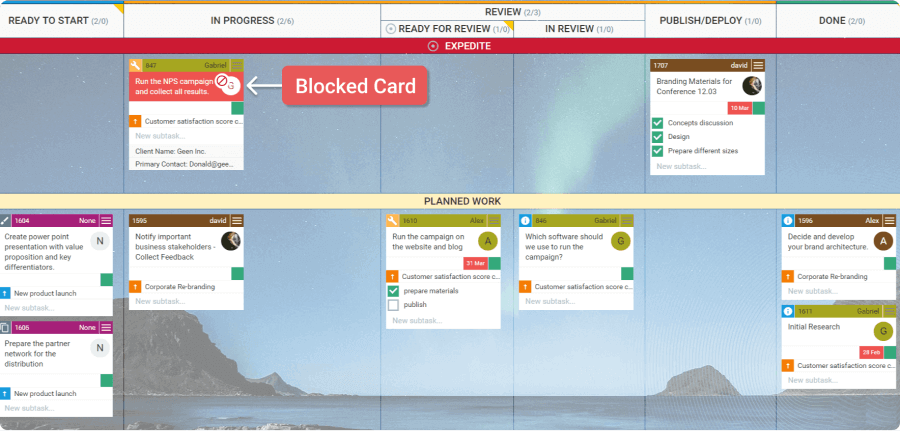
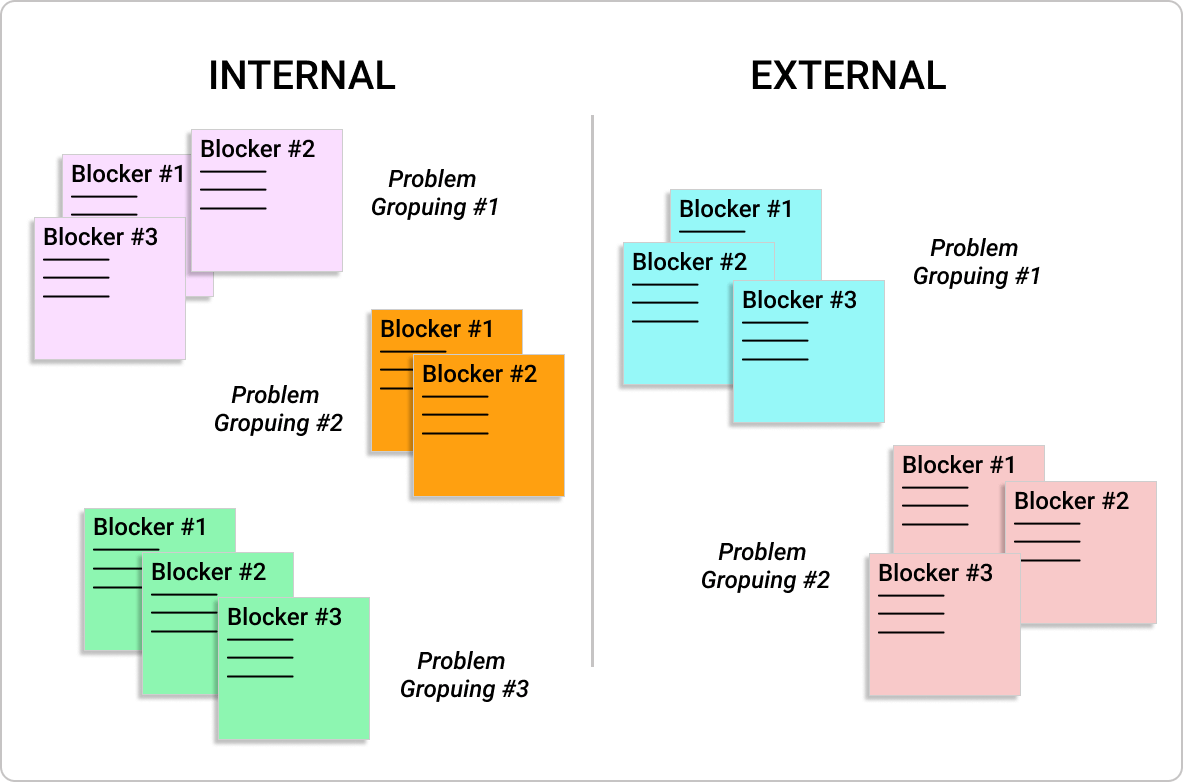
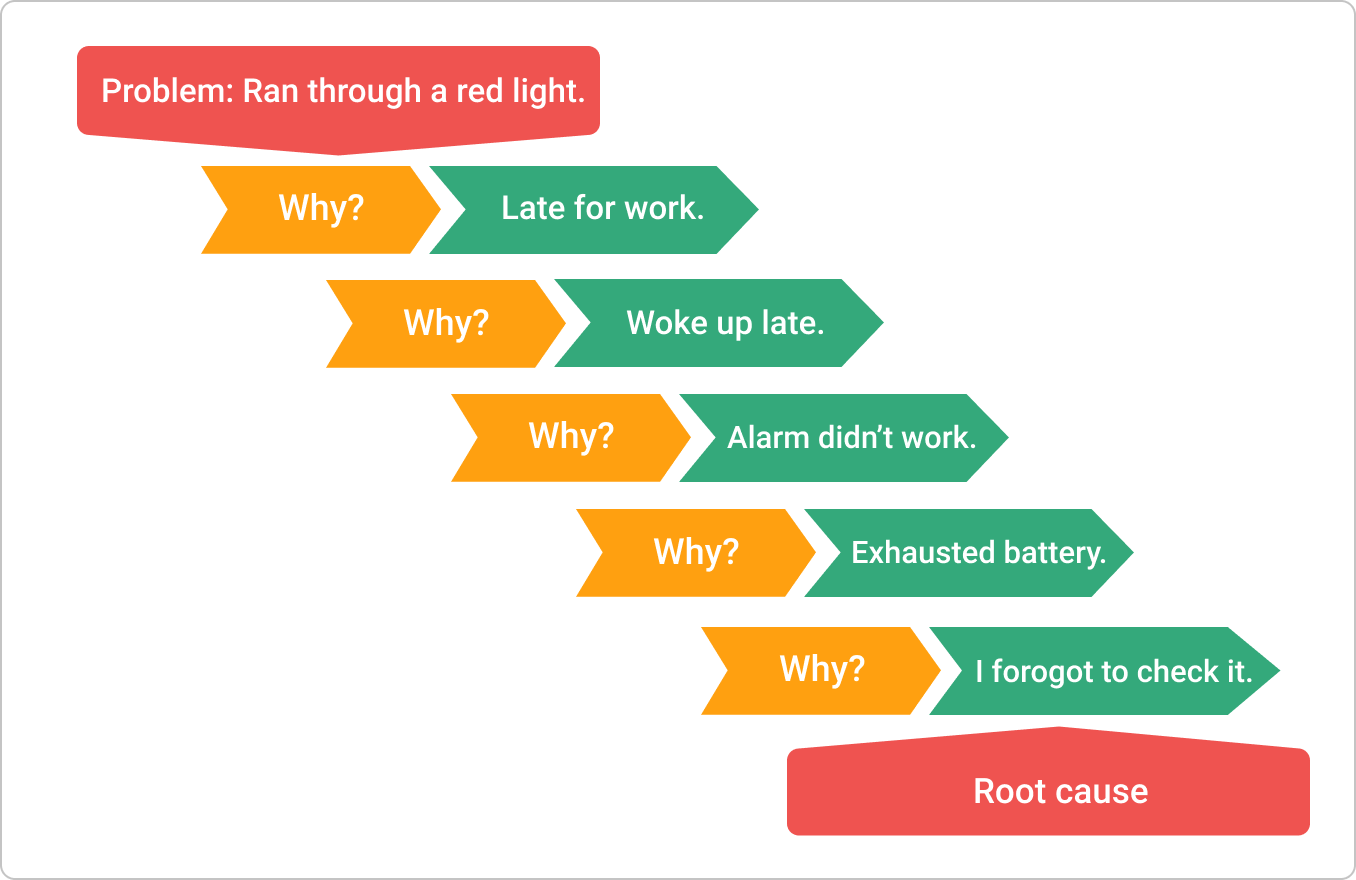 Example of root cause analysis of a problem using the 5 Whys method
Example of root cause analysis of a problem using the 5 Whys method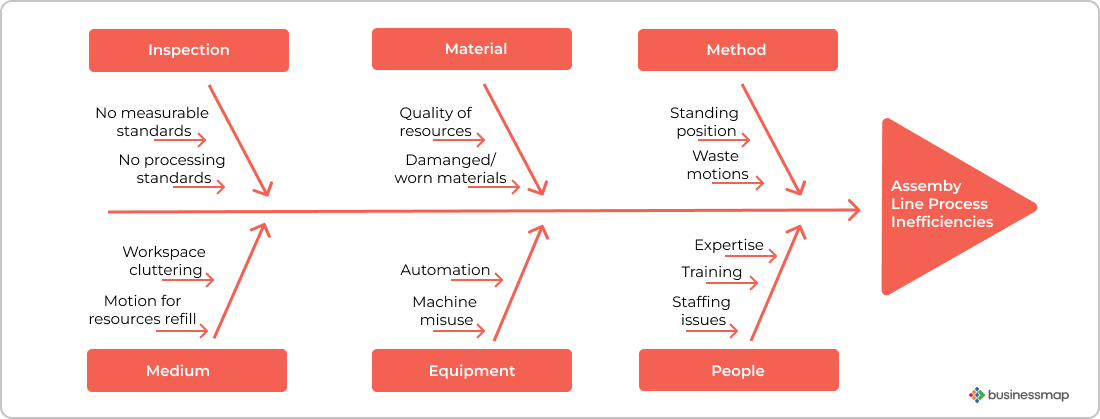 Example of root cause analysis of an assembly line efficiency issues using Fishbone diagram
Example of root cause analysis of an assembly line efficiency issues using Fishbone diagram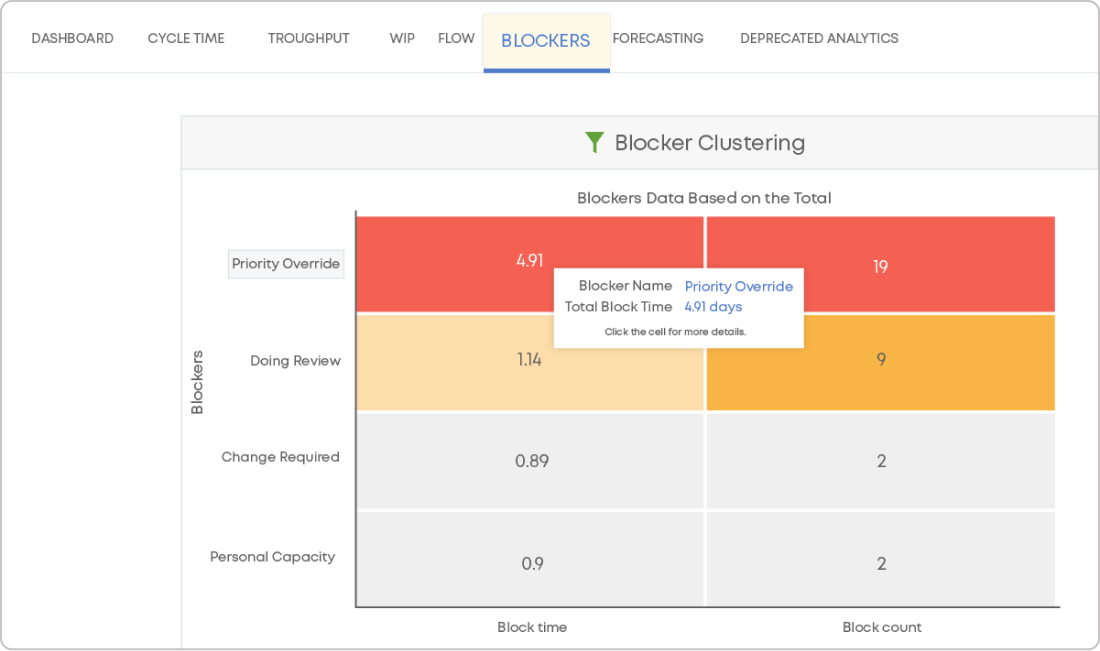 Visualization of blocker type and block time using Blocker Clustering chart in Businessmap
Visualization of blocker type and block time using Blocker Clustering chart in Businessmap


